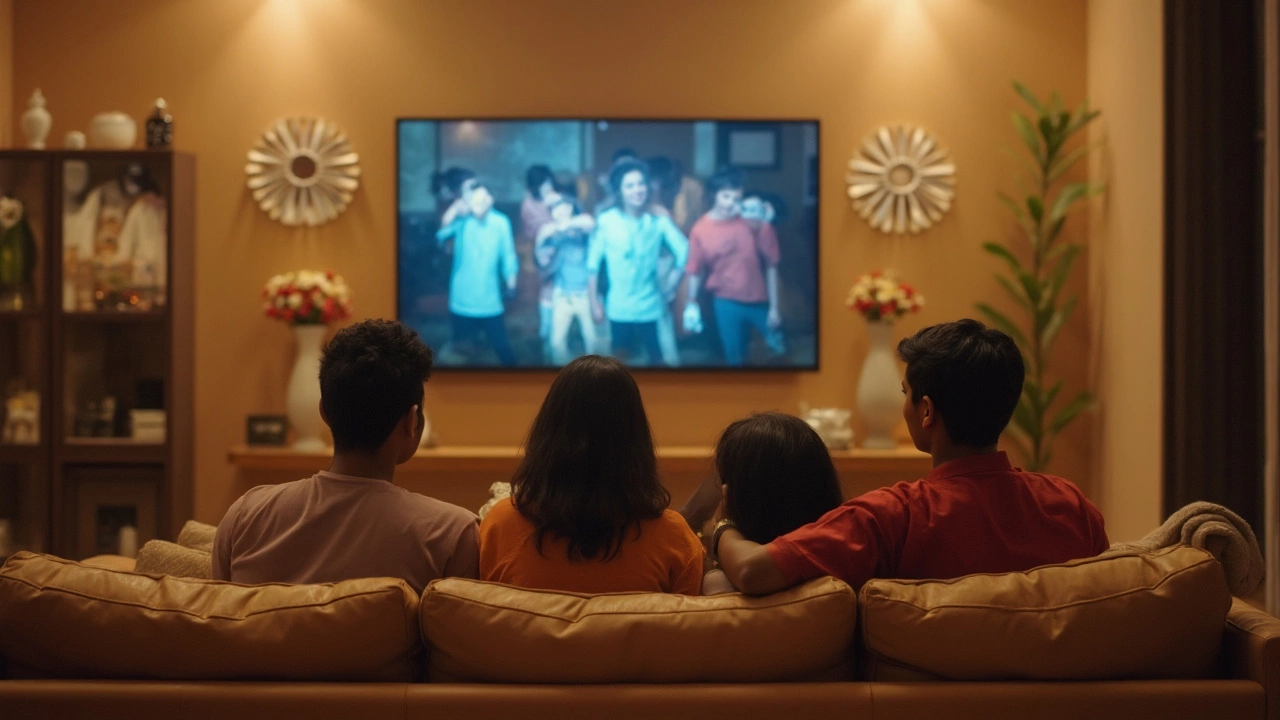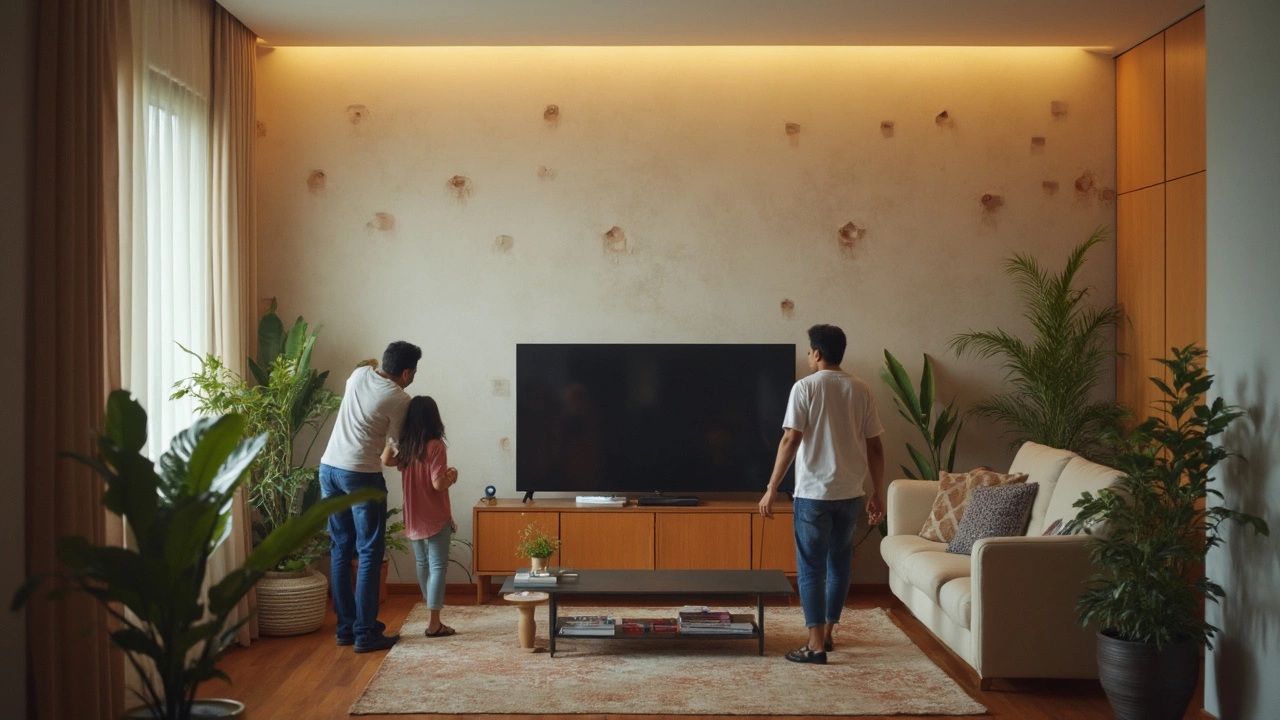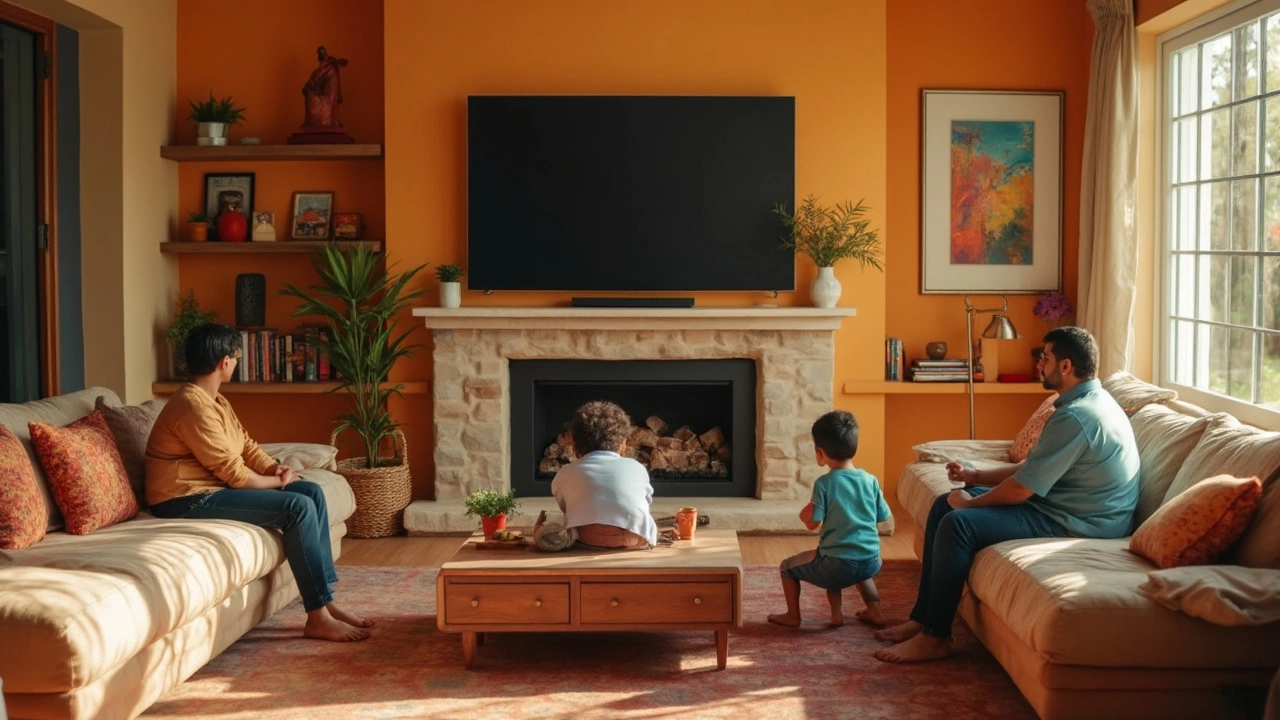Thinking about where to put your TV? The truth is, the wrong spot can wreck your viewing, cause endless annoyances, or even damage your TV. Ever tried watching your favorite show through sunlight glare? Total buzzkill. Or maybe you’ve seen a TV perched way up above a fireplace—looks cool in a magazine, but reality is a pain in the neck (literally).
Lots of folks get their TV placement wrong without even realizing. It’s not just about finding an empty wall. A bad location leads to headaches, uncomfortable watching, and more cleaning than you signed up for. I've learned, thanks to some rookie mistakes (and a broken remote thanks to Otis's soccer in the living room), that where you put your TV really does matter—sometimes more than buying a fancy new screen or soundbar.
The good news: a few smart tips can save you a ton of hassle. Here’s how to steer clear of classic TV placement disasters and enjoy your set-up a whole lot more.
- Next to Windows: The Glare Trap
- Above the Fireplace: Hot Mistakes
- Too High or Too Low: Neck Pain Zone
- In Direct Pathways: The Bump Hazard
- In Tiny Spaces: Crowd Control
Next to Windows: The Glare Trap
Placing your TV right next to a window is asking for trouble. Daylight and screens are not friends, especially when sunlight hits your TV directly. It doesn’t just wash out the colors or make it tough to see—you’ll end up squinting or annoyed at every glare. The most obvious sign of this TV placement mistake is that little dance you do around the room, hoping for a better angle. And let’s be honest, closing the curtains every time you want to binge-watch feels pretty old.
It’s not just discomfort either. Prolonged exposure to strong sunlight can slowly fade your TV screen, especially with LCD or OLED models. According to Consumer Reports, direct sun can even overheat some TVs if you leave them in a sunbeam too long. That’s basically a recipe for premature TV burnout.
Here’s what happens when your TV sits next to the window:
- Glare makes daytime watching almost impossible.
- Faded screen colors after a year or two.
- Possible overheating, depending on the season and window size.
- Extra dust from open windows loves to settle on your screen.
If you have no choice but to keep your TV near a window, try these fixes:
- Invest in blackout curtains or thick blinds. Sheer isn’t enough.
- Angle the TV away from the direct line of sunlight.
- Look for an anti-glare screen or film (they actually help).
The simplest trick? Test the spot at different times of day before you commit. You’ll notice fast if that perfect space turns into a glare trap every afternoon. Don’t fall into the sunlight struggle—choose a wall where your shows, not the window, steal the spotlight.
Above the Fireplace: Hot Mistakes
Mounting a TV above the fireplace might look stylish on Pinterest, but in real life, it’s packed with problems. First off, let’s talk heat. Electronics and heat are not friends. Most TV makers—like Samsung and LG—warn against any installation where the temperature could hit above 95°F (35°C). A study from CNET even showed that fireplace heat sometimes pushes well past that, especially when you have a real fire going for a few hours. That means your TV could lose years off its life right above those flames.
It’s not just about cooking your TV, either. You have to crane your neck way up to watch—think front row at the movies, but every night. My own neck hurt just thinking about it. The American Chiropractic Association straight up says prolonged neck extension leads to discomfort and even chronic pain.
"Consistently watching TV mounted too high can lead to neck and upper back problems, especially for families with kids." — Dr. Andrea Reyes, American Chiropractic Association
Another headache? Picture quality. When you sit below your TV, colors and image clarity can take a hit because most screens look best when you’re at eye level with the center of the display. If you’re standing around or leaning back, it’s not so bad. But if you’re on the couch—where most of us are—it just looks off. Ever noticed the weird color shift or faded blacks on your screen? That’s the problem.
Don’t forget about cables, too. Getting power and HDMI cords up to a fireplace spot can turn into a DIY nightmare fast. You’ll either need to run ugly wires along your wall or pay extra for fancy in-wall installation. I once tried to fish a cable up brick and, honestly, almost gave up and went back to board games instead.
- TV safety: Heat can fry circuits; repairs cost a fortune.
- Viewability: Too high = neck pain = less binge-watching fun.
- Picture quality: Off-angle viewing messes with color and contrast.
- Installation hassle: Cables and wall anchors can get complicated fast.
| Problem | Above Fireplace | Eye-Level Stand |
|---|---|---|
| Heat Exposure | High | Low |
| Neck Comfort | Poor | Great |
| Picture Quality | Compromised | Optimal |
| Setup Cost | Higher | Lower |
If you want your TV to last, look good, and not wreck your neck, keep it far from the fireplace. There’s a reason the best TV stands put your screen right where it belongs: eye level and away from heat.

Too High or Too Low: Neck Pain Zone
One of the biggest mistakes with TV placement is hanging it way too high or plopping it too low on a stand. When your TV sits at the wrong height, watching for even an hour can make your neck cranky. This isn't just a comfort issue, either; chiropractors say that staring up at a screen for long stretches messes with your posture and can lead to nagging soreness, even headaches.
Here's a simple rule: the center of your TV screen should line up with your eyes when you’re sitting in your usual spot. In a regular living room setup, that means the middle of the TV ends up roughly 42 inches off the floor—give or take, depending on your couch or chair. A 2022 survey by the Consumer Technology Association found most people mount their TV at least six inches too high, trying to make it look "cinematic," but it ends up being a literal pain.
- Too high = craned neck, shoulder stiffness, family grumbling.
- Too low = you’re slouching or looking down, which kills the vibe and messes with your back.
Mounting over the fireplace is a classic mistake here—it's almost always several feet above eye level. Same goes for placing your TV stand on the floor or using old furniture that's not made for TVs. These spots might seem convenient when you’re rearranging, but your body will pay for it during long movie marathons.
Looking for a quick check? Sit where you usually watch, close your eyes, and look straight ahead. Now open your eyes. Are you looking at the top, bottom, or dead center of the screen? If it’s not the middle, time to rethink that spot.
| Seating Distance | Ideal TV Center Height |
|---|---|
| 6-8 feet | ~40-42 inches |
| 8-10 feet | ~42-44 inches |
| 10-12 feet | ~44-46 inches |
Get the height right, and you’ll enjoy your TV way more—no sore neck, no complaints, just a smooth viewing experience.
In Direct Pathways: The Bump Hazard
Putting your TV right in the line of foot traffic is asking for trouble. Think about spots like the stretch between the kitchen and the living room, or by a narrow hallway—places where everyone’s always walking through, arms full, sometimes not even looking up. If you use a TV stand in these spots, expect at least one crash from a running kid, distracted pet, or that friend who never pays attention.
Real talk: TVs are lighter but way less sturdy these days. They tip way easier than the chunky sets from the '90s. The National Electronic Injury Surveillance System found that more than 14,000 people a year in the U.S. end up in the ER because a TV falls on them. Now add in kids or pets, and your risk jumps big time.
- Never set your TV on a stand right by busy doorways.
- Avoid placing TVs where play happens, like the middle of a living room floor or in front of couches.
- Keep cords and cables tucked away to prevent trips or yanks that pull the TV down.
Aim for a spot that’s out of everyone’s path. Corners and solid TV stands help, but always lock your TV to the stand or wall if there’s even a slight chance of bumping into it. If you’ve got little ones (or hyper dogs, like at my house), this is non-negotiable. Safety before style.
| TV Placement | Bump Risk | Recommended? |
|---|---|---|
| By Main Doorway | High | No |
| Behind Couch | Low | Yes |
| Next to Hallway | Medium | No |
| Corner of Room | Low | Yes |
The bottom line: if it’s in the way, it’s in the wrong place. When deciding where not to put your TV, make sure it’s not somewhere folks walk through all day—unless you want broken screens, hospital bills, or the never-ending sound of "Watch out!" in your house.

In Tiny Spaces: Crowd Control
Ever walk into a small room and feel like the TV stand takes up half the floor? Shoving your TV into tight corners or cramming it between furniture can turn even a good-sized screen into an awkward obstacle. Not only does it crowd your space, but it makes every movie night feel a bit claustrophobic.
Here's what usually goes wrong: sofas pushed up close, no proper viewing distance, and everyone jockeying for the one clear angle. Experts recommend keeping at least 4–6 feet between your seating and a 40–50 inch TV. In a tight room, that's tough, and it means you could be straining your eyes or neck.
Placing a TV stand in high-traffic areas like narrow hallways or at the edge of a dining space just leads to bumped knees, stubbed toes, and even riskier—someone (like my kid Otis) sending the remote flying under the couch. Clutter makes clean-up a hassle and forces everyone to maneuver around the electronics just to sit down. To keep things safe, always leave some space for walkways—at least 2 feet is the general suggestion so nobody has to shimmy sideways.
If you just can't avoid a small room, look for space-saving solutions. Wall-mount the TV instead of using a bulky stand. Pick a compact TV stand with built-in storage to keep cables, remotes, and consoles out of sight. It stops a tiny room from feeling even more crowded. And if you have little kids or pets running around, skipping stands with sharp corners is definitely a smart move.
| TV Size | Min. Viewing Distance | Recommended Stand Width |
|---|---|---|
| 32" | 4-5 feet | At least 34" |
| 43" | 5-7 feet | At least 45" |
| 55" | 7-9 feet | At least 57" |
Trying to do movie night or game day in a cramped spot doesn't just kill the vibe—it actually makes using your TV less fun and more stressful. Give yourself (and your stuff) some breathing room. You’ll be way happier with both your living space and your screen-time.

